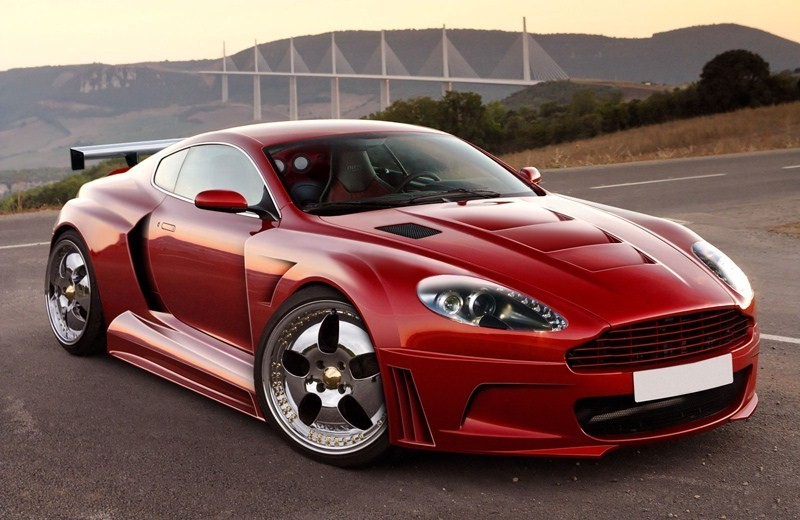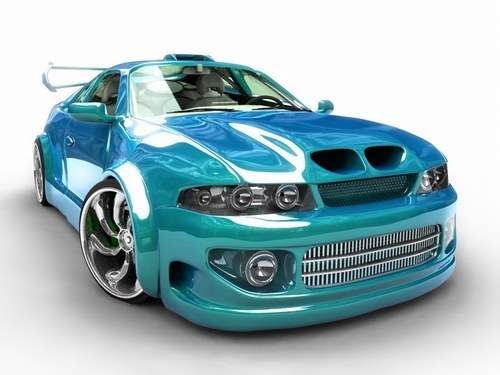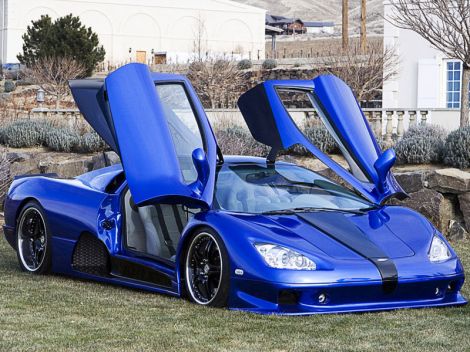|
|
|---|
Tuesday, December 28, 2010
RPMGO Car Blog |
- Quick Look – 2011 Kia Forte SX
- Automakers Target Weight Reduction
- 2012 Ford Focus Gets Brake-Based Torque Vectoring
- In Depth – 2010 BMW 760Li
| Quick Look – 2011 Kia Forte SX Posted: 28 Dec 2010 04:31 AM PST A few years ago Kia was seen as that Korean automaker that produced the ugly and clunky Sportage and the crummy Sephia model. Things have changed a great deal since then thanks to the successful collaboration with Hyundai and Kia started launching great cars like the Cee'd (hatchback) and the Pro Cee'd (coupe) along with the new generation of the Sportage which greatly improved the company's image, especially in Europe where the Cee'd was and still is a huge hit. Kia was aiming to offer a rival to Mazda's 3 model and they came up with the Forte hatchback, which is in our opinion at least, the most beautiful car of this segment. Some say that Kia borrowed a couple of design ideas from the first generation of the Mazda 3, especially in the back, with the roof spoiler, the forward-raked backlight and the triangular quarter-windows. The Fort's proportions are tidier than the Japanese car due to the paring of more than 7 inches of rear overhang from the Forte's sedan sibling. The hatchback offers an increased amount of cargo space and an improved access to the things you stash inside the vehicle. Compared to the sedan, the hatchback adds extra 4.7 cubic feet of cargo room located behind the rear seats. As standard, the car comes with 60/40-split rear seatbacks as well as covered storage space located beneath the cargo floor. All these improvements over its sedan sibling come at the expense of performance unfortunately. Just like the up-level sedan Forte SX, the hatchback SX is offered with the largest of the two power units available which is a 2.4-liter 4-cylinder that is capable of outputting 173 hp and 168 pound feet of torque. The EX and sedan-only LX models are offered with the 2.0-liter 156 hp engine. The 173 hp engine can be linked to a 6-speed automatic gearbox and the SX model is offered with steering-wheel-mounted shifters, which is something quite remarkable in the car's segment, where its main rivals besides the Mazda 3 are Hyundai Elantra, Subaru Impreza 5-door, Toyota Matrix and the VW Golf 5-door hatchback. In comparison to the sedan which is able to reach 60 mph in 8.6 seconds, the 5-door Forte is 70 pounds heavier, making it 0.3 slower to do the 0-60 mph sprint. In addition, the sedan needs 23.6 second to reach 100 mph while the hatchback requires about 25.3 seconds. The 2.4-liter engine is rated to do 23 mpg city / 31 mpg highway with the automatic transmission and 22 mpg city / 32 mpg highway with the manual. The hatchback features a MacPherson-strut front suspension and a torsion-beam rear suspension. The Forte is fitted with 17-inch rims covered in low profile 215/45 tires. The overall feel of the ride quality is quite good, but the car's chassis wasn't tuned for serenity. Compared to its most important rival in this segment, Mazda 3, the Kia Forte 5-door hatchback is less satisfying to drive and less polished, but this doesn't mean that it will lose the battle. What it loses in this compartment surely makes up with the packed cabin and creature comforts. The SX will set you back $19,090 while the EX is $17,590. The EX is offered as standard with cruise control, 5-speaker stereo system, keyless entry as well as power windows and locks. The SX's additional features include leather-wrapped shift knob and steering wheel, "metal finish" interior accents and telescoping steering wheel. For automatic transmission, the customer must pay $1,000 more. The tech package costs $1,800 and includes a voice-activated and intuitive touch screen entertainment/infotainment system, along with chrome door handles, keyless start and automatic headlamps. A sunroof is available as an optional feature for $750. Kia became a popular automaker for launching affordable cars and indeed this is the case with the Forte taking into consideration that a similar equipped Mazda 3 costs about $26,400 while a Forte with the all of the above features sums it up to $23,640. What does the Mazda 3 have over the Forte? The tuned chassis, but the question is it is really worth the extra $3,000? This is a decision that you will have to make. Another reason why the Forte is more appealing is its superstar warranty, a trademark for all Kia cars. If you are one of those drivers that love to take the car for a spin, choose the Mazda 3, for everything else, the Kia Forte is considerably better plus it is quite close to Mazda's driving abilities. Post published on Rpmgo.com |
| Automakers Target Weight Reduction Posted: 28 Dec 2010 02:55 AM PST It seems that the vast majority of the automakers are aiming to reduce the weight of pickup trucks in their attempt of meeting the new very restrictive standards for fuel economy, without having to sacrifice the towing capabilities and strength of the vehicles. The new restrictions will be applicable starting with 2016, which means that Ford and General Motors (along with the rest of the automakers) will have just one design cycle in order to make important changes to their pickups lineup, meaning that they will have to use costly steel substitutes like aluminum, magnesium and other steel alloys. Pickup manufacturers will have to pass on these higher costs to customers who have come to associate mass with performance. According to Dick Schultz who is a consultant at Ducker Worldwide as well as an expert regarding the use of metals in cars, "there is a lot of hand-wringing in the industry right now. You can't afford to be on the wrong side of this thing." The new restrictions will require for automakers to reach an average fleet fuel economy of 35.5 mpg by 2016. Light trucks must be able to do 30 miles per gallon starting with 2016. The CAFE – corporate average fuel economy standard for this year is 29.2 miles per gallon and for light trucks alone it is 24.9 mpg, according to government data. These new more restrictive standard comes at a time when most of the important automakers launch a bundle of battery-electric, hybrid and plug-in cars, which all will definitely help the sector to meet these new requirements. Automakers say that reducing the weight of their trucks is also important to meeting the new guidelines. This weight reduction issue is going to be a very important challenge for most of the manufacturers taking into consideration the average size of these trucks along with the high demand that they are able to handle big and heavy loads and towing in the most difficult conditions available. In order to attract more customers and increase profits, truck makers have added significant electronic, safety and comfort features in the last ten years. As a direct consequence to these changes, the average weight of trucks has risen 22% from 2000 to 2010, according to federal data. Despite this significant weight increase, the fuel economy rose by a healthy 2% in these 10 years. The very first automaker that will roll out a pickup truck capable of meeting the 2016 requirements will be General Motors with its 2014 Chevrolet Silverado. Rick Spina, who is in charge of the full-size truck development for GM said that it will be a tough task to meet, but they will do everything they can so that the customers will understand the fundamental changes that had to be made. Besides the 2016 standards, all automakers may have to achieve CAFE standards of 62 mpg for the entire fleet by 2025, according to a scenario thought by the United States government. Spina added that General Motors is targeting to shave off 500 pounds from its trucks by 2016 and by 2020 or so; they might be able to cut 1,000 pounds / truck. He stated that by using blown-in foam instead of a more affordable, yet heavier, pad to buffer noise in specific areas of the trucks could become more common in future trucks developed by General Motors. During this time, it seems that Ford is looking to use a magnesium alloy frame for the upcoming generation of the popular and very successful F-150 pick-up truck and they might use aluminum for the body panels of the same model. By replacing the old-fashioned steel with aluminum, Ford might be able to shave off about 800 pounds per truck. Spina told Reuters that General Motors is thinking about using magnesium and aluminum for the frames of future models of its GMC Sierra and Chevrolet Silverado trucks. Post published on Rpmgo.com |
| 2012 Ford Focus Gets Brake-Based Torque Vectoring Posted: 28 Dec 2010 02:22 AM PST The new generation of the Ford Focus will be available at dealerships early 2011, and besides the bundle of standard and optional features available, the 2012 Focus will get the "torque vectoring control" feature. For those of you that haven't heard about this system, it is capable of splitting the power between the two driven wheels of the car in order maximize traction and increase overall performance. The higher-end systems are capable of manipulating the output to each of the four wheels through a set of gears controlled electronically. Other systems will apply a subtle amount of braking to the inside of the car's wheel, which will cause more power to be transmitted to the outside of the wheel, meaning that it will help rotate the automobile through a turn. Ford will be using the latter on the upcoming generation of the popular Focus model and it will be a premier for the manufacturer to equip a North American model with this technology. After years of thorough research and implementation, these very useful systems will equip more and more cars in the compact segment, cars more affordable and accessible to mainstream. What you need to know that this system is capable of doing some damage to the car, like overheating the rotors, pads as well as the fluid when flogged hard and long enough – like in the Volkswagen GTI. However, we hope that Ford has done a better job with this system and these problems will not occur on the upcoming Focus. According to the press release published by Ford, the slight braking pressure which is applied to only one of the four wheels will be imperceptible do the driver of the Focus and the behind-the-wheel experience will offer more sense of control and stability throughout the curve. This system will be mostly appreciated by novice drivers as the car will benefit from increased stability, given them the needed confidence. This torque vectoring control technology will be using the braking system of the Focus in order to imitate the effect of limited-slip differential by constantly balancing the power distribution of the engine between the driven front wheels of the car to suit various road surfaces and driving conditions. When the driver is accelerating the Focus through a tight corner, the system will apply an imperceptible degree of braking to the inside of the car's front wheel, so that more of the engine's torque will be transmitted to the outside of the wheel, adding extra traction, improved handling and better grip. The torque vectoring control will be offered as standard on all of the Focus models that will be available in early 2011. As soon as more information regarding how the system will actually work on the 2012 Focus will become available, we will do a follow-up of this article explaining if the handling is actually improved like Ford promised. If you didn't know, this system was first introduced on high-end sports cars a few years ago and now we are glad to see that it will be implemented on popular and affordable cars like the Focus. Post published on Rpmgo.com |
| Posted: 28 Dec 2010 01:50 AM PST For $66k you can drive this entry-level 7-Series or choose other attractive alternatives like the Mercedes-Benz C63 AMG, BMW M3 or the Cadillac CTS-V. Whichever you pick, this is some serious money investment and for this price you should and must get all the technology and features you could think of. BMW fully understands this and they have applied this recipe to the 760Li, but this doesn't mean that it will be an instant hit, especially when there are other alternative which are more reasonable as far as pricing is concerned, from the same automaker. The F01 7-Series from BMW is quite an attractive car, some say more attractive in comparison to its most important rivals, the S-Class from Mercedes-Benz or the A8 flagship from Audi, but this is just a matter of taste, we will let you choose. Without any doubt, the 7-Series looks and feels like a German car, but it does have something borrowed from the wonderful 2011 Jaguar XJ, which is a very good thing in our opinion. The 760 model with 12-cylinders is only available with the generous long wheelbase, which adds extra 5.5 inches on length between the front and rear wheels. About 98% of this extra space is enjoyed by the people sitting in the back as the "Li" badge signifies added 5.4-inches for legroom for backseat passengers. Besides the extra space, other important model-specific characteristics include the "V12" badging between the wheel wells and front doors, massive 19-inch rims and quad exhaust tips in the back. Without any doubt, the car combines luxury with a commanding road presence like no other car is capable at the moment; at least this is what we think. The car is available with BMW's Individual Composition options from which customers can choose a bundle of leather-bound wine list of wheel and color options that are only available on the 7-Series. If you want to add active cruise control, it will set you back $2,400; night vision costs $2,600 while the rear seat entertainment package adds another $2,200. These are only just a few examples of optional features that you could get as the list is very long, typical for a luxury sedan like the big 7. Add to this the gas guzzler tax which is $2,100 and the destination charge which costs $875, you arrive in the $150k price range. This amount of money will guarantee you that you have one of the most luxurious sedans in the world, equipped with every single option that you could think of, plus the heart of the car – the latest addition to the engine lineup for the 7-Series, the V12 twin-turbocharged 6.0-liter. All of the models in the 7-Series lineup can be fitted with turbocharged power units and all perform very well, except (maybe) the one that fits the 750Li, which is a V8 4.4-liter unit. The engine that equips the 760Li outputs a remarkable 535 hp and a massive 550 pound-feet of torque, which is 135 hp / 100 lb-ft more in comparison to the V8 power unit. Although the 760Li is considerably heavier than the 750Li (385 pounds more), it does the 0-60 mph sprint quicker (4.5 compared to 5.2 seconds). Even more important is the fact that the power of the 760Li engine is available sooner in comparison to the V8 as the low-down thrust arrives on strong at only 1,500 rpm, which is 250 rpm sooner than the V8. The engine is linked to an 8-speed automatic gearbox that performs very well at keeping the power unit running in the lower end of the torque band, precisely for fuel efficiency. On highway, the 2010 BMW 760Li will do about 19 miles per gallon and a somewhat even mix of highway and city driving averages approximately 16.4 miles per gallon, which isn't very bad at all. The Dynamic Damping Control and the Driving Dynamics Control systems work with both the chassis and the transmission of the 7-Series and they offer four levels of driver engagement: normal, comfort, sport and sport+. The first one is a combination between comfort and sport while comfort is for guaranteeing the most plush 760Li experience available. Sport and sport+ are for those drivers that want to push the limits of the car even further. The sport mode will reduce the traction control which will allow you to have more fun with the car, especially when you are hard cornering, although this car wasn't made for sporty driving but it can do the job surprisingly well. Although it has a lot of strong points, our guess is that not many people will be getting the 760Li when there are two alternatives, more affordable and maybe just as good from the same manufacturer. The first one is the 740i, priced at $70,650 which offers a perfect combination of taste and luxury, the main idea behind the 7-Series in our opinion. The other one is the 750i, priced at $82,500 which is more fun to drive. All things considered, for people that have the money to pay for the 760Li, it wouldn't be a mistake at all, as the wonderful engine and the luxurious looks both inside and out, make it one of the most desirable cars out there. Post published on Rpmgo.com |
| You are subscribed to email updates from Rpmgo.com To stop receiving these emails, you may unsubscribe now. | Email delivery powered by Google |
| Google Inc., 20 West Kinzie, Chicago IL USA 60610 | |























